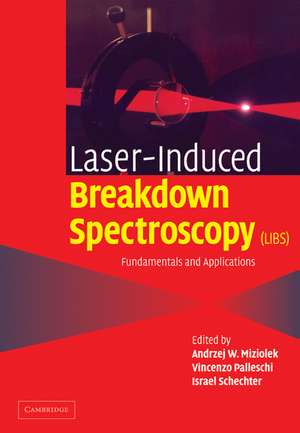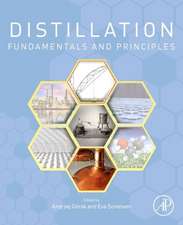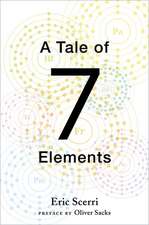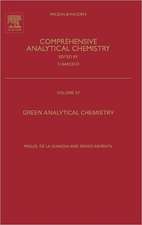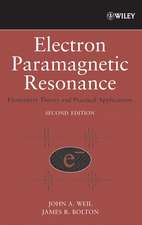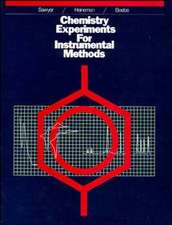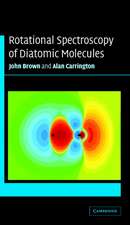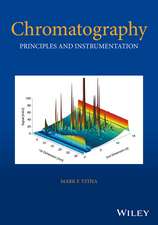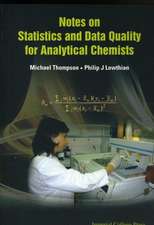Laser Induced Breakdown Spectroscopy
Editat de Andrzej W. Miziolek, Vincenzo Palleschi, Israel Schechteren Limba Engleză Paperback – 27 aug 2008
| Toate formatele și edițiile | Preț | Express |
|---|---|---|
| Paperback (1) | 589.49 lei 6-8 săpt. | |
| Cambridge University Press – 27 aug 2008 | 589.49 lei 6-8 săpt. | |
| Hardback (1) | 1241.31 lei 6-8 săpt. | |
| Cambridge University Press – 6 sep 2006 | 1241.31 lei 6-8 săpt. |
Preț: 589.49 lei
Preț vechi: 662.35 lei
-11% Nou
Puncte Express: 884
Preț estimativ în valută:
112.81€ • 122.50$ • 94.76£
112.81€ • 122.50$ • 94.76£
Carte tipărită la comandă
Livrare economică 22 aprilie-06 mai
Preluare comenzi: 021 569.72.76
Specificații
ISBN-13: 9780521071000
ISBN-10: 0521071003
Pagini: 640
Ilustrații: 331 b/w illus.
Dimensiuni: 172 x 244 x 38 mm
Greutate: 1 kg
Editura: Cambridge University Press
Colecția Cambridge University Press
Locul publicării:Cambridge, United Kingdom
ISBN-10: 0521071003
Pagini: 640
Ilustrații: 331 b/w illus.
Dimensiuni: 172 x 244 x 38 mm
Greutate: 1 kg
Editura: Cambridge University Press
Colecția Cambridge University Press
Locul publicării:Cambridge, United Kingdom
Cuprins
Preface R. Russo and A. W. Miziolek; 1. History and fundamentals of LIBS D. A. Cremers and L. J. Radziemski; 2. Plasma morphology I. Schechter and V. Bulatov; 3. From sample to signal in laser induced breakdown spectroscopy: a complex route to quantitative analysis E. Tognoni, V. Palleschi, M. Corsi, G. Cristoforetti, N. Omenetto, I. Gornushkin, B. W. Smith and J. D. Winefordner; 4. Laser induced breakdown in gases: experiments and simulation C. G. Parigger; 5. Analysis of aerosols by LIBS U. Panne and D. Hahn; 6. Chemical imaging of surfaces using LIBS J. M. Vadillo and J. J. Laserna; 7. Biomedical applications of LIBS H. H. Telle and O. Samek; 8. LIBS for the analysis of pharmaceutical materials. S. Béchard and Y. Mouget; 9. Cultural heritage applications of LIBS D. Anglos and J. C. Miller; 10. Civilian and military environmental contamination studies using LIBS J. P. Singh, F. Y. Yueh, V. N. Rai, R. Harmon, S. Beaton, P. French, F. C. DeLucia, Jr., B. Peterson, K. L. McNesby and A. W. Miziolek; 11. Industrial applications of LIBS R. Noll, V. Sturm, M. Stepputat, A. Whitehouse, J. Young and P. Evans; 12. Resonance-enhanced LIBS N. H. Cheung; 13. Short-pulse LIBS: fundamentals and applications R. E. Russo; 14. High-speed, high resolution LIBS using diode-pumped solid state lasers H. Bette and R. Noll; 15. LIBS using sequential laser pulses J. Pender, B. Pearman, J. Scaffidi, S. R. Goode and S. M. Angel; 16. Micro LIBS technique P. Fichet, J-L, Lacour, D. Menut, P. Mauchien, A. Rivoallan, C. Fabre, J. Dubessy and M-C. Boiron; 17. New spectral detectors for LIBS M. Sabsabi and V. Detalle; 18. Spark-induced breakdown spectroscopy: a description of an electrically-generated LIBS-like process for elemental analysis of airborne particulates and solid samples A. J. R. Hunter and L. G. Piper.
Descriere
This is a comprehensive reference explaining the fundamentals of the LIBS phenomenon, its history and its fascinating applications.
